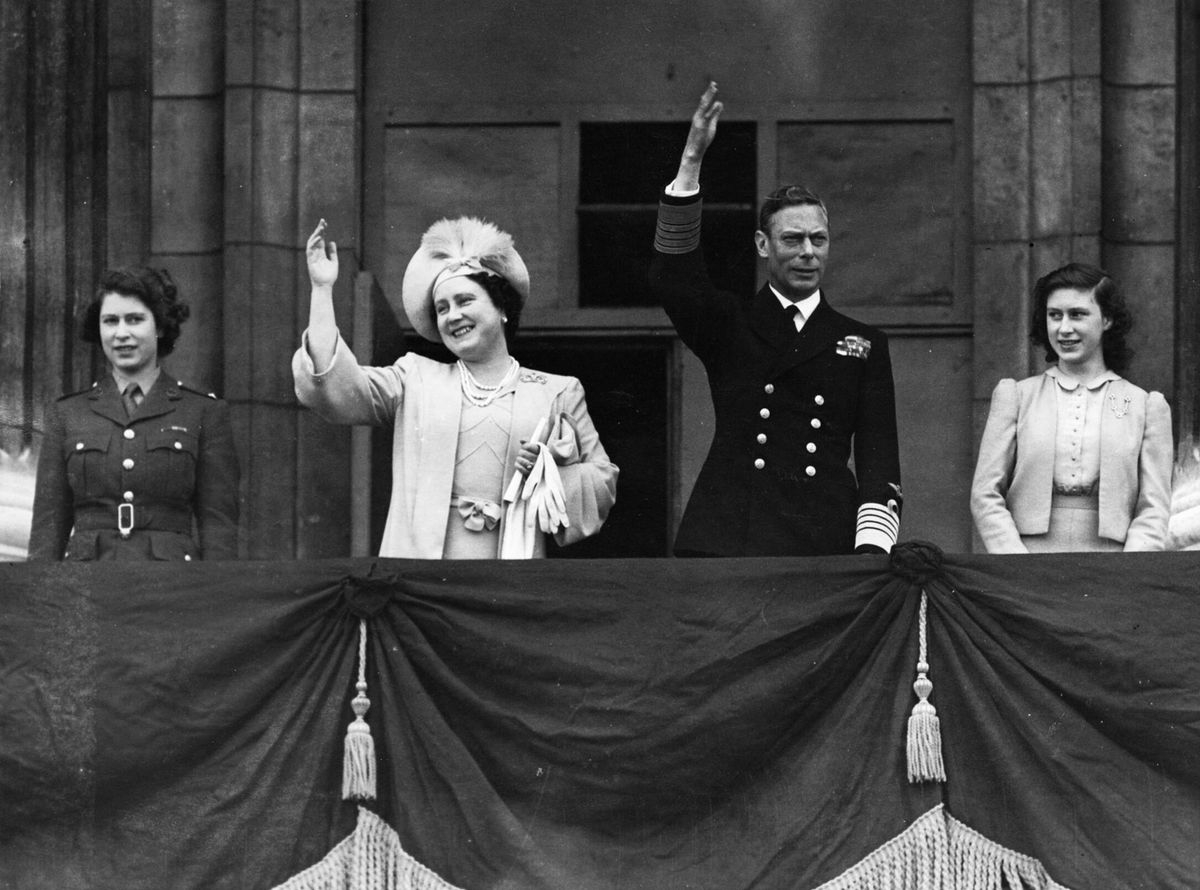“I want to be as famous as the Queen of England,” Andy Warhol once said. Throughout her life, Queen Elizabeth II was probably the most recognised person on the planet.
She was 25 when she became Queen in 1952. When she married her third cousin Prince Philip, Duke of Edinburgh, in 1947, a report in The New Yorker magazine described her as “a starry-eyed Cockney girl”.
Through her long reign, the Queen worked with 15 different prime ministers. She lived through, and often contributed to, seismic historical moments— witnessing the defeat of Nazism, Britain’s entry and exit from the European Union, the birth of the internet and the onset of Covid-19. The Queen also presided over countless royal ceremonies, national celebrations, jubilees, marriages and funerals, each time demonstrating that the royal family genuflect to no one when it comes to the staging of pomp and circumstance.
The Queen was the ceremonial head of state, but she also embodied the realm and the country. At the same time, she was known for her desire for privacy. Surrounded by celebrity royals, she was the royal who always avoided celebrity. In a more recent New Yorker report, Sam Knight describes her as an “empty mirror for the nation to gaze upon itself”.
Here are the news photographs that best define her long life as the head of the realm.
The future commander in chief in khaki green battledress, 1945
On 8 May 1945, Victory in Europe (VE) Day, thousands of people gathered on the Mall leading up to Buckingham Palace, to celebrate the end of the Second World War in Europe. King George VI and Queen Elizabeth were called on to the palace balcony, flanked by 19-year-old Elizabeth, in her military uniform, and her sister Margaret. The war had been a formative experience for Elizabeth. Not yet then bound by her responsibilities to the realm, she served for a time in the Auxiliary Territorial Service, where she learned to fix a car engine.
Shortly after this photograph was taken, Elizabeth and Margaret crept out of Buckingham Palace, much to the chagrin of their security detail, and hid themselves in plain sight among the London crowds, who remained oblivious to the princesses' presence as they celebrated the end of war.
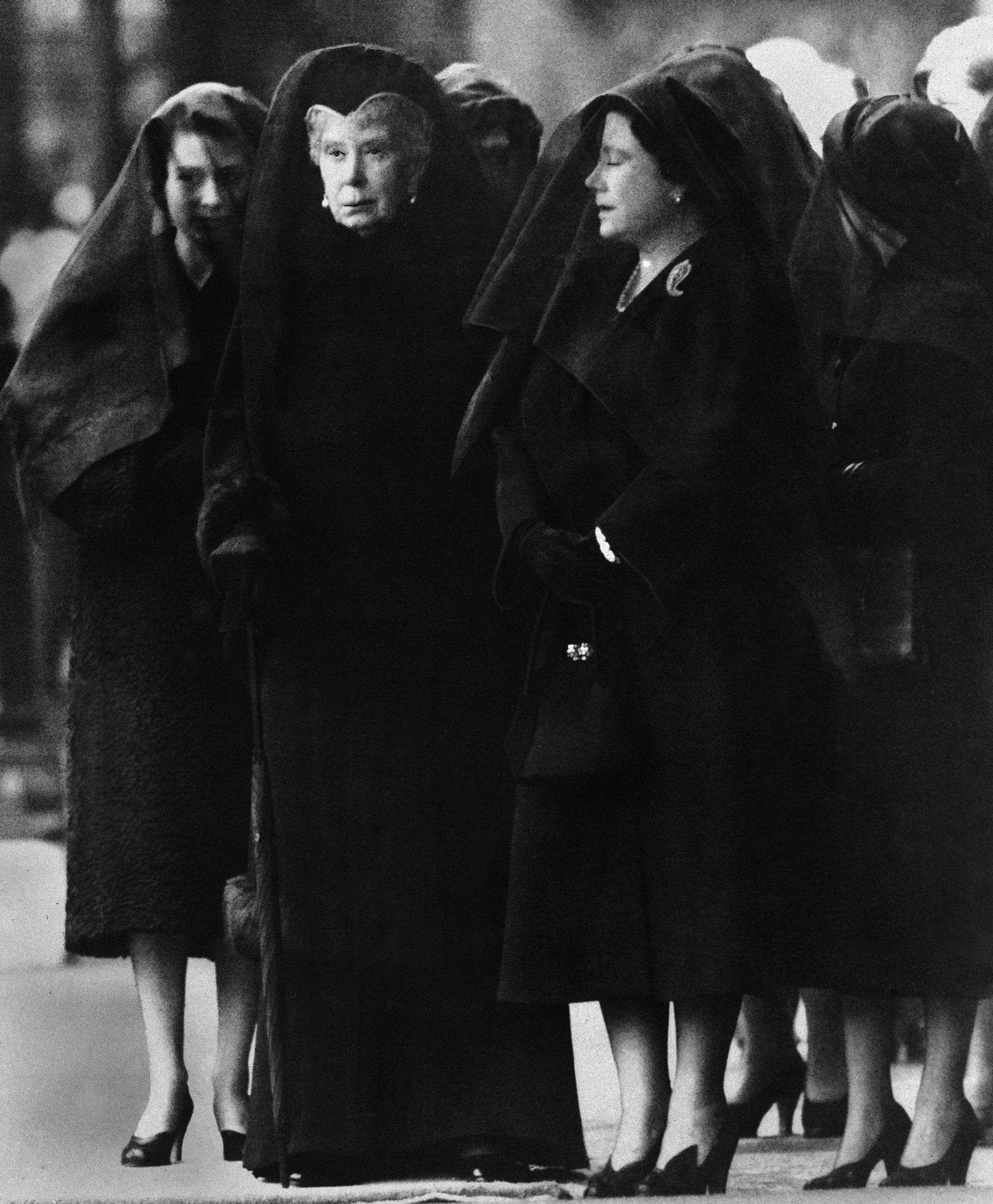
Queen Elizabeth II (left) with her grandmother Queen Mary, her mother, Queen Elizabeth the Queen Mother, and Princess Margaret at the funeral of George VI at St George's Chapel, Windsor Castle, 15 February 1952. The photograph was taken by Ron Case, of Keystone Press Agency Trinity Mirror/Mirrorpix/Alamy Stock Photo
Three Queens stand in mourning, 1952
It is one of the most famous images in British royal history. Three queens, united in grief at the funeral of George VI, whose death on 6 February 1952 brought his daughter Elizabeth to the throne. The photograph depicts the young Queen Elizabeth II with her mother, Queen Elizabeth the Queen Mother, and her grandmother, Queen Mary, each shrouded in black at the Windsor Castle funeral. The image has come to represent the continuity of the royal family; a stable presence in an island country that often struggles to work out its place in the world.
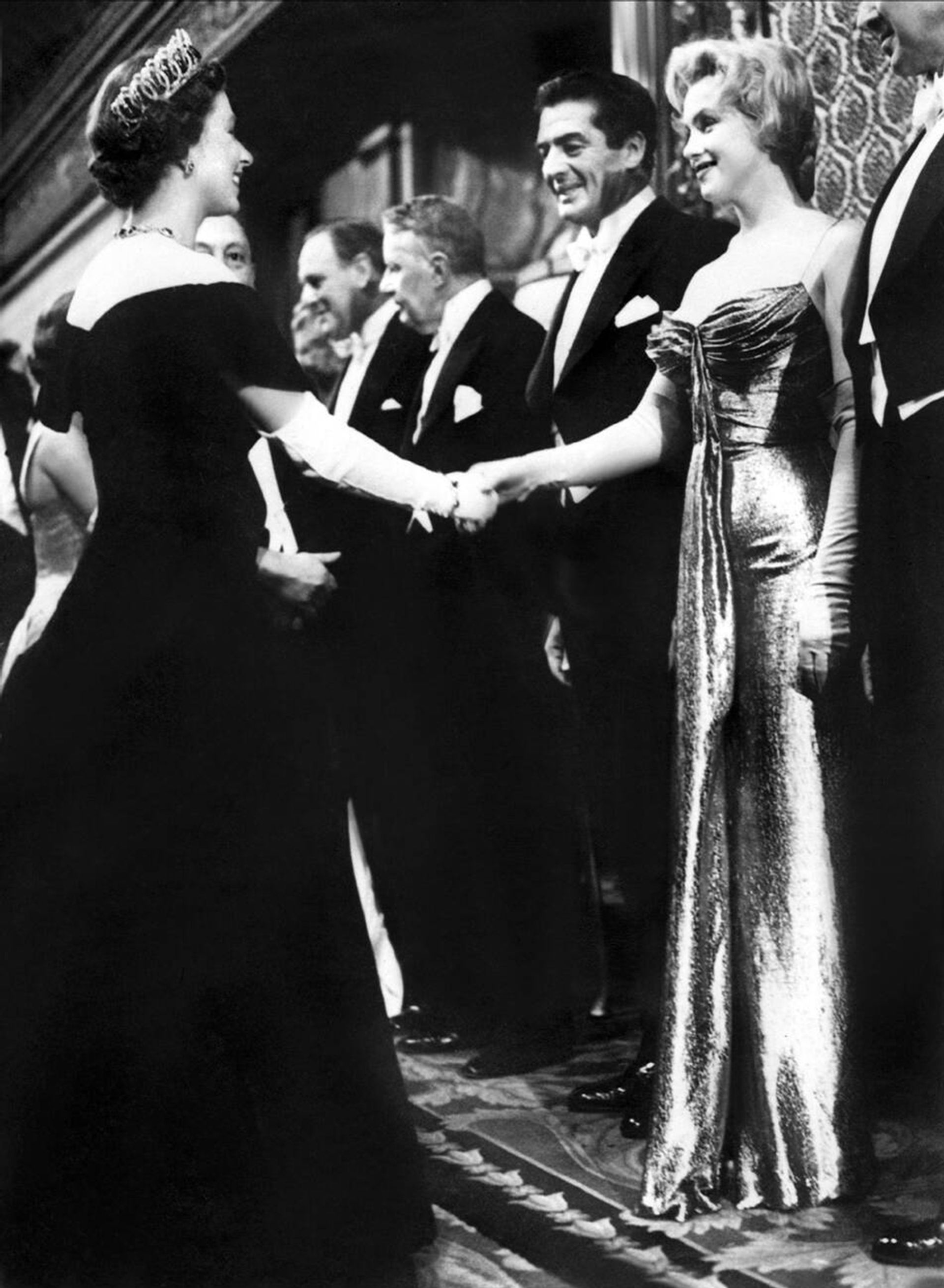
The Queen meets Marilyn Monroe at the London film premiere of The Battle of the River Plate, 29 October 1956 Allstar Picture Library Ltd / Alamy Stock Photo
Two Queens meet on the red carpet, 1956
In 1956, the Queen of the United Kingdom and of Her other Realms and Territories met the Queen of Hollywood. Elizabeth II and Marilyn Monroe were born weeks apart; they were both 30 at the time of their meeting. The American movie star did not wait around for many people. But, at the London film premiere ofThe Battle of the River Plate, in Leicester Square, she stood in the receiving line to meet the Queen. Monroe, then at the height of her extraordinary fame, died nearly six years later, in 1962, at the age of 36. This photograph marks the only time the pair met. It could be argued that no two women did more to define modern femininity in the 20th century.
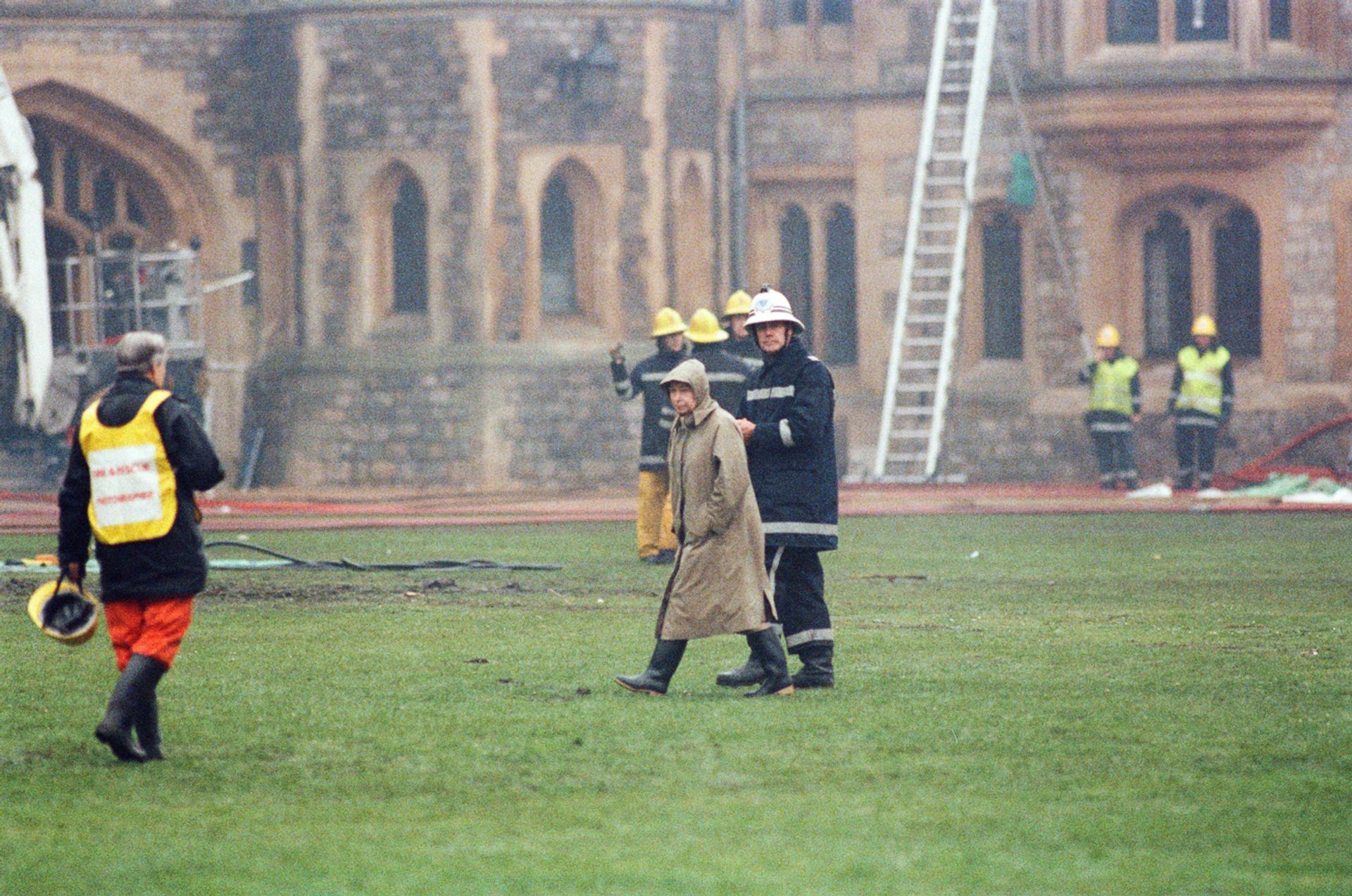
The Queen, accompanied by the chief fire officer, crosses the quadrangle to assess the fire damage at Windsor Castle, 21 November 1992 Trinity Mirror/Mirrorpix/Alamy Stock Photo
Devastated by the Windsor Castle fire, 1992
The Queen walked across the dewy grass, hood up in a knee-length raincoat, wellington boots on her feet. In the background, the windows of Windsor Castle can be seen along with some of the more than 200 firemen who had been fighting a devastating fire at the castle. The chief fire officer walked beside her as they crossed the castle quadrangle. She was, one of her family later said, "absolutely devastated” by the events of the previous day.
The fire had started at 11.30pm on 20 November 1992—the Queen and Prince Philip's 45th wedding anniversary—in Queen Victoria's private chapel, where a faulty spotlight ignited a curtain next to the altar. The fire burnt for 15 hours and gutted 115 rooms—including St George's Hall and eight other state rooms—in a castle that has been a home to the British monarch for a millennium. As firemen fought the blaze, castle staff worked to save artworks from the Royal Collection, salvaging porcelain, furniture and paintings by Van Dyck, Rubens and Gainsborough.
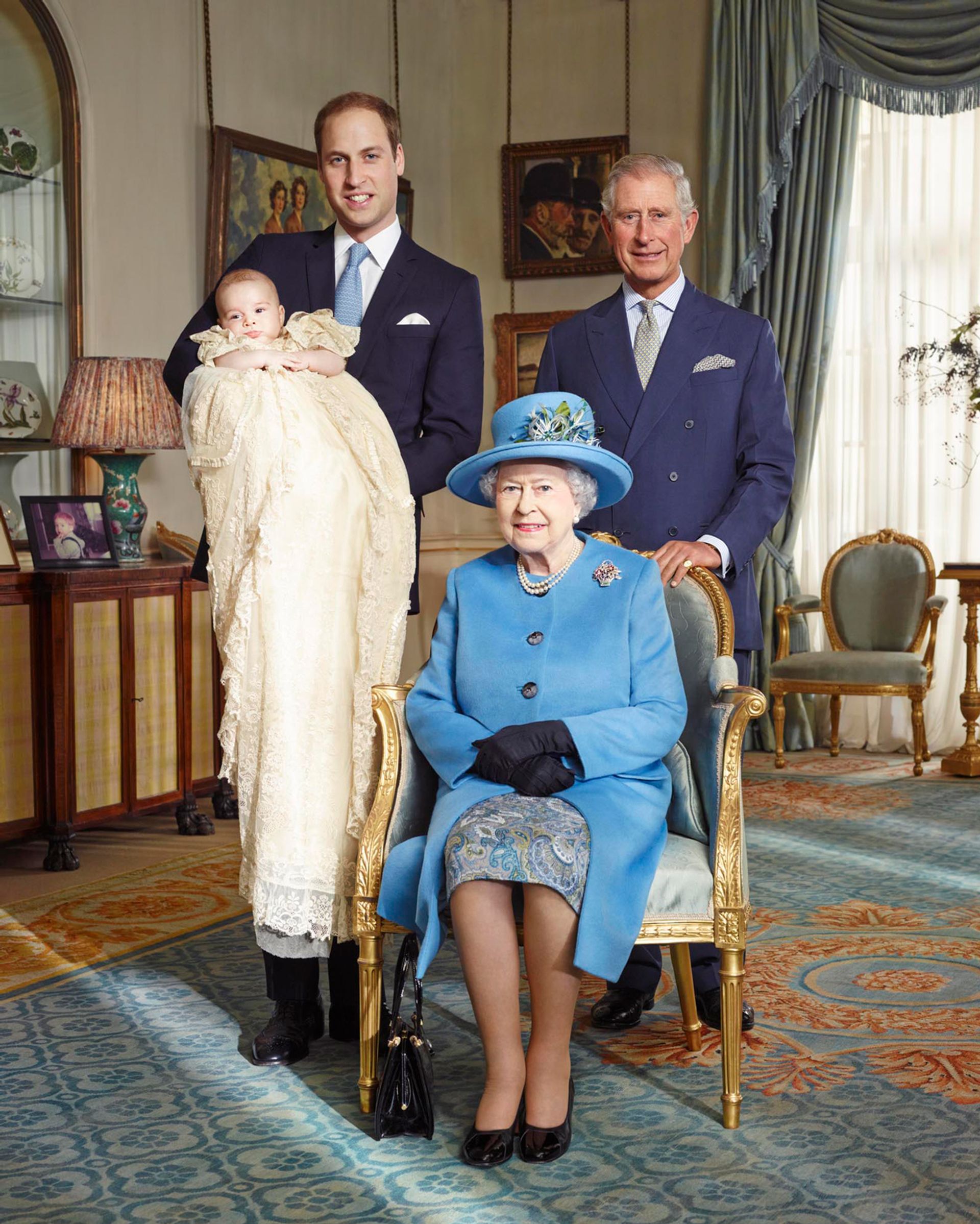
The Queen with three heirs apparent: her son Prince Charles, her grandson Prince William, and her great grandson Prince George on his christening day, 23 October 2013 © Jason Bell/Camera Press
Succession: four generations at a royal christening, 2013
In the collection of the National Portrait Gallery in London is a photograph titled Four Generations, taken by the photographer John Chancellor in 1899. In the image, Queen Victoria is seated. Next to her is her then five-year-old great grandson, the future Edward VIII. She is flanked on either side by her son King Edward VII and grandson King George V.
In October 2013, Elizabeth II's great grandson Prince George was christened at the Chapel Royal, in London. Soon after, the Queen was photographed by Jason Bell, with three heirs apparent to the British throne—her son Prince Charles, her grandson Prince William and the infant George. It is an image that consciously echoes Chancellor's 1899 group—another portrait of royal succession.
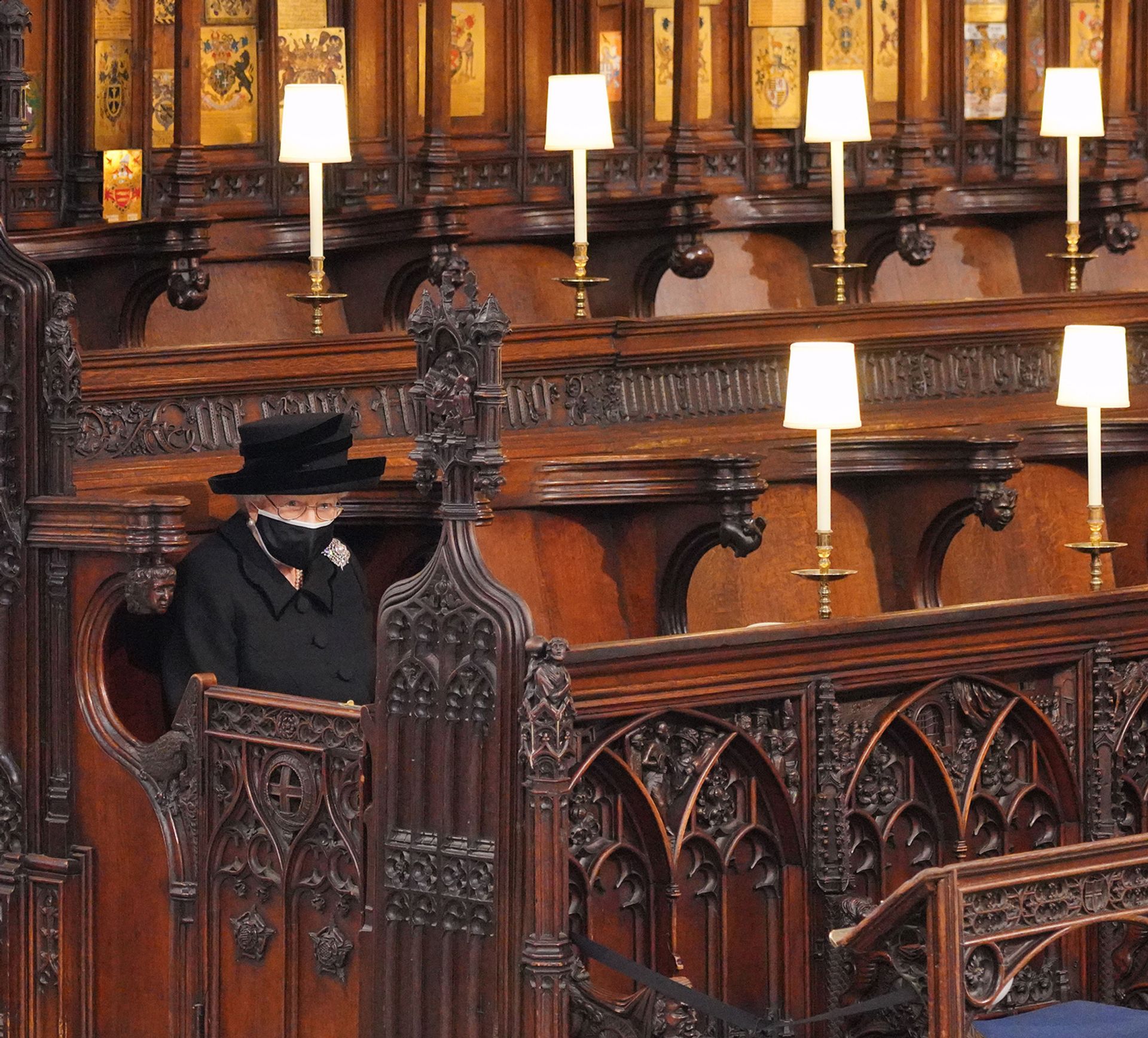
The Queen at the funeral of her husband, Prince Philip, Duke of Edinburgh, in St George's Chapel, Windsor Castle, 17 April 2021. Because of Covid-19 pandemic restrictions, the Queen sat alone and in a congregation of just 30 family members Jonathan Brady—WPA Pool/2021 Getty Images
A solitary sovereign: Prince Philip's funeral, 2021
The Queen had known her husband for 81 years. He had been her consort —in her words, her “strength and stay”—for nearly 74 years. Prince Philip died in April 2021 at the age of 99. The image of The Queen at his funeral, a widow clad in black and masked against the global Covid-19 pandemic, “broke hearts around the world", in the words of the Washington Post. The year before, at the height of the first pandemic lockdown, the Queen had given a television address, saying: “We will be with our friends again; we will be with our families again; we will meet again.”
Prince Philip's funeral was sparsely attended. Like so many who lost loved ones during the pandemic, the mourners at the funeral had to sit at a distance from each other and cover their faces. They could not sing or touch each other. The photograph caught Elizabeth as she sat by herself, a look of deep sorrow etched across her often impassive face. It became at once an image of historic significance.


